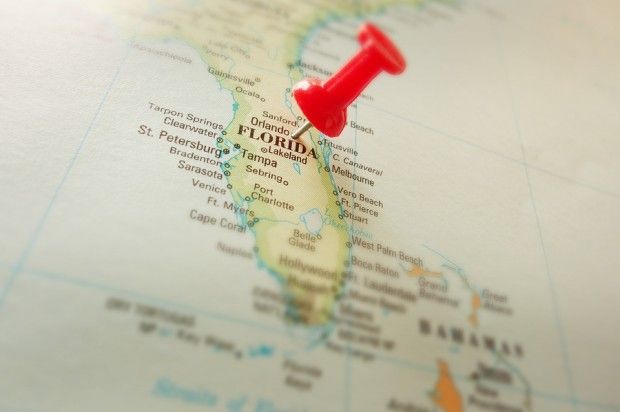Tropical Storm Colin was moving across northern Florida early Tuesday as it knocked out power to thousands, prompted Governor Rick Scott to declare a state of emergency and threatened flooding across the U.S. Southeast.
The system may bring as much as 10 inches (25 centimeters) of rain across western to northern Florida, southeastern Georgia and coastal areas of North and South Carolina through Tuesday, the National Hurricane Center said in a bulletin at about 2 a.m. New York time. A tropical storm warning extended to North Carolina.
About 26,000 customers had lost power in Florida and Georgia as of 7:45 p.m. New York time on Monday, utility data compiled by Bloomberg show. Colin is forecast to move across northern Florida and southern Georgia for the next few hours and head near or over the southeastern coast of the U.S., according to the hurricane center in Miami. While it’s shifting away from oil and natural gas platforms in the Gulf of Mexico, orange-juice futures jumped to the highest in more than four years on speculation that the storm would shrink the Florida crop.
“The combination of a storm surge and the tide will cause normally dry areas near the coast to be flooded by rising waters,” the hurricane center said in its bulletin. “Localized coastal flooding and dangerous surf are possible along the Atlantic coast from Florida to North Carolina.”
Areas along Florida’s west coast were already getting heavy rain and high winds earlier on Monday, said Brian Wimer, a meteorologist with AccuWeather Inc. in State College, Pennsylvania.
Storm Warnings
Scott declared a state of emergency in 34 counties. Franklin County told residents in low-lying areas and in mobile homes they should leave before the storm arrives.
Colin, with top winds of 50 miles (80 kilometers) an hour, was about 55 miles west-southwest of Jacksonville, Florida, moving at 23 mph, the hurricane center said.
Colin is the third named storm of 2016 and the second in about a week. It comes less than a week into the official Atlantic hurricane season. Hurricane Alex, the first storm of the year, formed in the mid-Atlantic in January. A storm gets a name when its winds reach tropical-storm strength of 39 mph.
Related: Near-Normal Hurricane Season Predicted by Colorado State Team
Eastern Pacific
In the eastern Pacific, the first tropical depression of the year has formed and is about 110 miles south-southwest of Salina Cruz, Mexico, the hurricane center said. The storm’s top winds are 35 mph, just below tropical-storm strength.
A tropical storm watch has been posted from Puerto Escondido to Boca De Pijijiapan, meaning conditions could deteriorate in the next two days. It could bring as much as 10 inches of rain and cause life-threatening flash floods and mudslides in the Mexican states of Oaxaca, Chiapas, Tabasco and eastern Veracruz.
-With assistance from Mark Chediak and Heesu Lee.





















 Artificial Intelligence Is Rewriting the Rules for Commercial Lines
Artificial Intelligence Is Rewriting the Rules for Commercial Lines  Five AI Trends Reshaping Insurance in 2026
Five AI Trends Reshaping Insurance in 2026  California Workers Comp Combined Ratio for 2024 Highest in 20-Plus Years
California Workers Comp Combined Ratio for 2024 Highest in 20-Plus Years  Executives on the Move at Liberty Mutual, Cowbell, W. R. Berkley
Executives on the Move at Liberty Mutual, Cowbell, W. R. Berkley 











